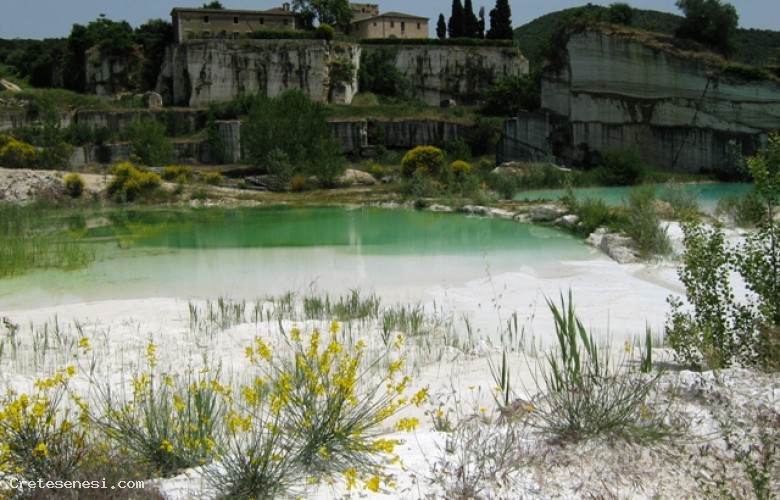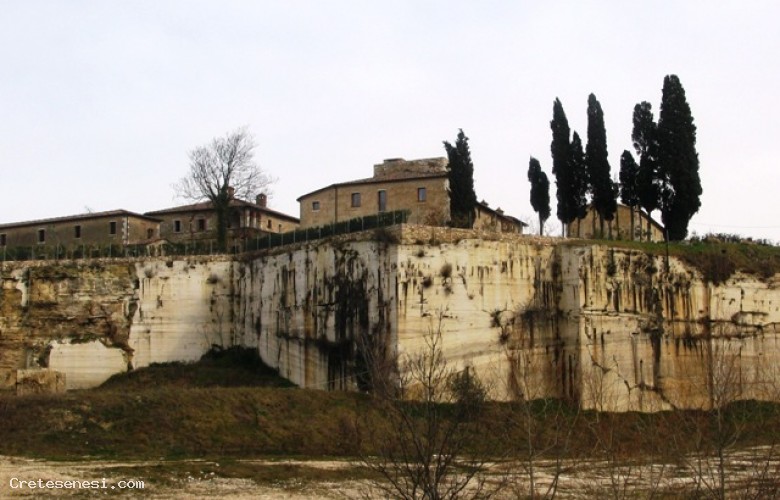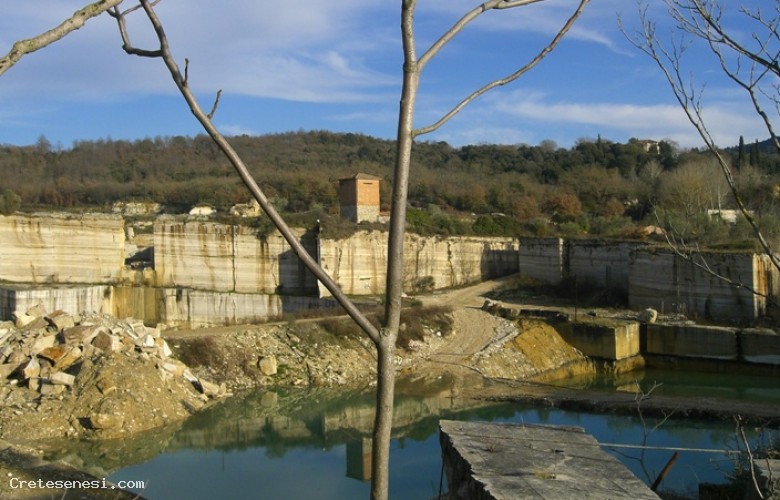Landscapes
Cave di Travertino dell'Oliviera
RAPOLANO TERME.jpeg)




The hills of the central territory of Rapolano are made up of Tertiary rocks, covered with banks of travertine and gravel, connected with a siliceous calcareous gluten. It was the abundance of travertine, together with the presence of the renowned hydrothermal springs, which decreed in the last centuries, the fortune of Rapolano. The mining activity, in fact, is testified since the XVI century, as we can see from a document of 1597 about the quarry of Noceto, which had provided Saint Mary in Provenzano with the material. Mainly linked to commissions concerning the building of single palaces, the extraction of the travertine was at the height of its glory between the last years of the XIX century and the first years of the XX century, to continue with ups and downs until nowadays.
The hills of the central territory of Rapolano are made up of Tertiary rocks, covered with banks of travertine and gravel, connected with a siliceous calcareous gluten. It was the abundance of travertine, together with the presence of the renowned hydrothermal springs, which decreed in the last centuries, the fortune of Rapolano. The mining activity, in fact, is testified since the XVI century, as we can see from a document of 1597 about the quarry of Noceto, which had provided Saint Mary in Provenzano with the material. Mainly linked to commissions concerning the building of single palaces, the extraction of the travertine was at the height of its glory between the last years of the XIX century and the first years of the XX century, to continue with ups and downs until nowadays.